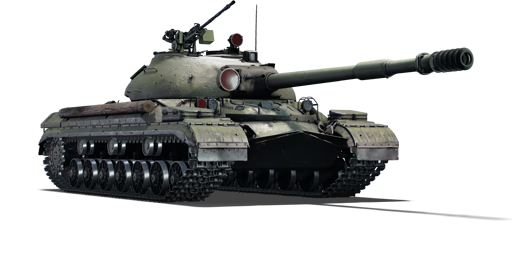The T-10M is a modernised modification of the seventh variant of the IS heavy tank family. The T-10 (also known as Object 730 or IS-8) was the final variant of the IS heavy tank produced by the Soviet Union during the Cold War. Object 730 was the name given to it during development. It was approved for production as the IS-8 (Iosif Stalin), but due to the political situation following Stalin's death in 1953, it was renamed T-10. The main differences between it and its immediate ancestor, the IS-3, were a longer hull, seven pairs of road wheels rather than six, a larger turret housing a new gun with a fume extractor, an improved diesel engine, and enhanced armour. Overall performance was comparable; however, the T-10 could carry slightly more ammunition, increasing from 28 to 30 rounds. The T-10M is the variant's final modification, seeking to bring it up to the increasingly difficult conditions of the Cold War. It had a longer 122 mm M-62-T2S L/46 tank gun with a five-baffle muzzle brake, a two-plane fully automatic stabilization system, a 14.5 mm KPVT heavy machine gun (which was a better ballistic match for the new main gun), infrared night vision equipment, and NBC protection. It was the last Soviet IS heavy tank to enter service. When the more advanced T-64 main battle tank (MBT) was introduced, it quickly replaced the T-10M in front-line formations.
Introduced in Update 1.51 "Cold Steel", the T-10M outperformed its predecessors in every area, including firepower, speed, armour, and efficiency. It was a promising breakthrough that arrived far too late. In the game, the T-10M behaves like a medium tank with somewhat below-average mobility but can reach speeds of up to 40 km/h. Its poor reload speed is arguably its only downside. However, in the 1960s, the Soviets recognized that the MBT concept was far more efficient. Tank guns with comparable capability, as well as reasonable armour, might be mounted on a medium tank, making it much more flexible than a heavy tank. This ideology suited the Soviets because MBTs were capable of performing far more deployments than the T-10M. Overall, the T-10M reflects the final closing chapters of World War II heavy tank design philosophy, marking the beginning of new doctrine and tactics.















